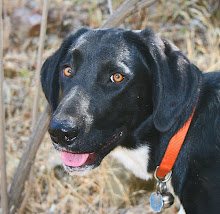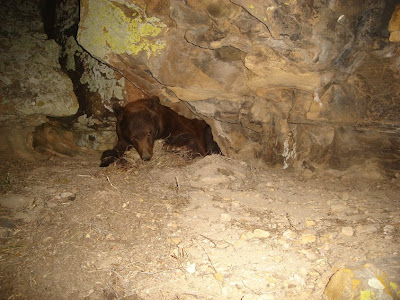
Thwack! A stick leaps into the air, and the redhead covers her head.
“You’re going to hurt someone with that thing.”
I’m in a serious eye-hand-coordination-feedback-loop and on a good roll, so I turn away, center a length of the limb on the stump, take aim, and thwack. Another oak stick shoots into the blue.
How satisfying, but I can take only part of the credit.
It’s the tool. The curved blade of this axe cuts cleanly, and the haft -- made of manzanita by the way, is a bit on the long side, giving it a lever arm of added force.
Woodworking tools, especially primitive ones give me great pleasure. I like the way they look. I like to see them at work in skilled hands, and I like to use them.
I was 11 years old when I got my first serious cutting tool, a hunting knife from Sears Roebuck. The details of that gift were buried in my memory until the day my mother called to tell me my father had died.
We had a houseguest that day, and I was stoic.
But that night the memory came back in a dream. My father had overridden my mother’s veto and bought the knife for me on the sly. He needed time to talk her into it, and when that was done he would show me how to handle it.
Meanwhile it would be in the top drawer of his bureau.
“You can look at it, but don’t play with it. It’s sharp.”
Naturally, I took the knife out of the case one afternoon and drew my finger across the blade. In my dream I felt the cutting bite, and with it came the full force of his death. The memory was vivid and complete, a father’s kindness to his son. I cried like a baby.
Eight years later in Mexico I watched the chips fly as woodcutters chopped pine on the slopes of Mt. Orizaba. I was smitten with their full-sized asymmetrical axes. Hecho en Mexico. Collins. I bought one with my meager cash.
A decade later I met a blacksmith in Nepal, an untouchable who lived in a dirt-floored lean-to. He was a man with impressive skills and knowledge of metallurgy, but he was trapped by a barren birthright.

He made the axe I was swinging today.
Man Bahadur Chankar was a gifted craftsman, but you wouldn’t know it from his tools. Western blacksmiths use a large assortment of tongs, fullers, flatters, swages, punches, files, and chisels.
This blacksmith’s anvil was a mushroomed length of truck axel driven into the ground. Yet with a few tongs and hammers he could make beautiful things from scrap metal and leaf springs.
If he needed a punch or a hot chisel, he made it from scrap, but they weren't permanent parts of his kit. That disabused me of the notion that a craftsman is only as good as his tools.
When most terai dwellers napped in the blast furnace heat of the pre-monsoon afternoon, I would walk to his hut and watch him work. He was dumbstruck.
No one in the village cared about his skills. His services were good only for barter. A perfect little tweezers for plucking chin hairs earned him a couple of beedies – local cigarettes. If someone cheated him, he accepted it as a blacksmith’s fate.
One day his 10-year-old daughter dropped the hacked parts of a mynah on a piece of corrugated iron by the fire. When it sizzled she put it into a small metal bowl of water, and her father set it over the forge with his tongs.
I watched with a certain apprehension when she added a grimy mixture of peppers and later turmeric.
The meat was obviously hers. I wondered if she found it dead, but hoped she killed it with a slingshot.
I guess it didn’t matter -- even to me the questionable meat soon smelled good enough to eat.
I visited the blacksmith for several years, bought him a set of files, and paid cash for adzes, axes, and kukris. I gave him clothes for his family.
The project ended, and I never saw him again.
But when I use his axe I remember the smell of sal flowers, dust, and wood smoke and honor the gift of his acquaintance.
[N.B.: For more on axes, see Chas Clifton’s blogpiece, Where did the axes go?]


































